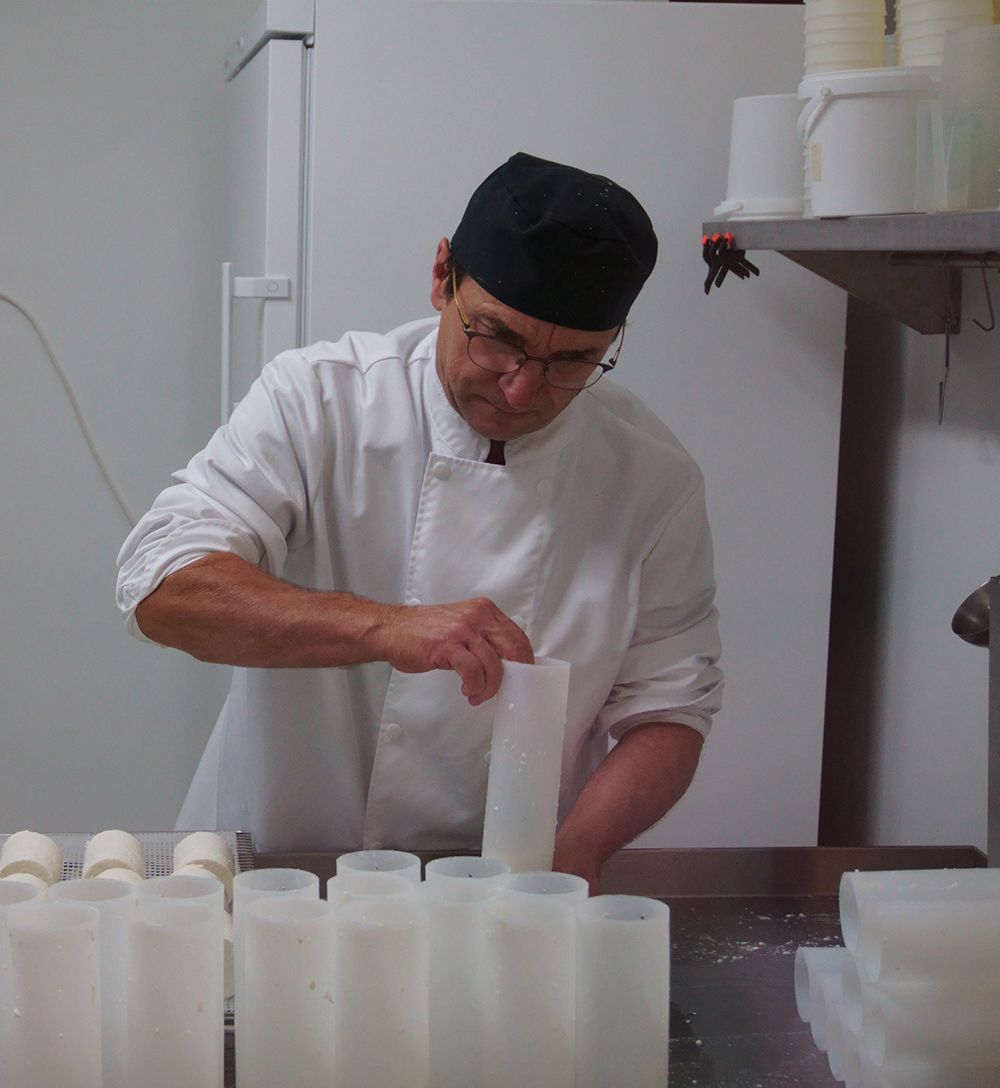
This idyllic region of France is sure to keep you coming back for more
Photographed by Hans Westbeek
Nestled in the heart of southwestern France, the Dordogne offers a feast for all senses. Highly regarded for its myriad historic monuments and pretty medieval villages, the region is characterized by a bucolic landscape of gentle river valleys, dense forests, and rolling hillsides blanketed in sunflowers and vines. Art de vivre, or the art of living, isn’t just another alluring French expression here; it is deeply intertwined with a rich gastronomic and viticultural heritage. Appreciating what’s on your plate or in your glass is elevated to an art form. And it all starts in the hands of dedicated producers.
The Dordogne, also known as Périgord, is home to the vineyards of Bergerac and Duras, located on both banks of the Dordogne River and stretching over 29,000 acres. Composed of seven unique appellations—Bergerac, Monbazillac, Saussignac, Rosette, Pécharmant, Montravel, and Duras—its wine spectrum includes everything from elegant reds to sweet aromatic whites that are redolent of honey and candied fruits. In terms of history, soil, climate, and grape varieties, the Dordogne’s wines are similar to those of the prestigious Bordeaux region to the west, yet each appellation is distinct, and each estate has its own unique character. There are choices aplenty to complement a culinary cornucopia that includes black truffles, duck and goose specialties, walnuts, succulent lamb, and strawberries—not to mention excellent cheeses.


TRAPPE D’ECHOURGNAC
“We wanted to be in natural surroundings and our work to be linked to our faith,” says Antoine Dumont. In September 2020 he and his wife Quitterie took over the management of the cheese factory at Abbey Notre-Dame de Bonne-Espérance in Échourgnac, a tiny village in the center of the Double Forest. The young couple had just returned from an eventful 18-month camping trip through Africa with their children and were looking to add more meaning to their lives. They left their busy careers—he worked in business development, she was a nurse—and found their calling at the abbey, working with 22 sisters between the ages of 28 and 97 who refine the Dordogne’s oldest cheese, Trappe d’Echourgnac.
The semi-hard cheese is made with pasteurized cow’s milk and has a pressed, uncooked paste. Its recipe was brought over by Cistercian monks who settled in the area in 1868. Originally from the Mayenne department in northwestern France, they went to Échourgnac to reclaim the marshy land, develop the area, and help put an end to a raging malaria plague. By 1878 the monks had built an abbey complete with a modern cheese factory. Production stopped in 1910 after the community dispersed, but when a group of nuns took over in 1923, they unearthed the old recipe and carried forth the cheesemaking tradition.
Cheese is no longer made on site, but the nuns have taken on the task of affineurs. Every Wednesday morning the young cheeses arrive from Brittany in small 10.5-ounce wheels and large wheels weighing almost four pounds. The small wheels are aged for two weeks while the larger wheels are aged twice as long.
The abbey’s flagship product is a cheese washed in walnut wine. It was first made in 1998 by the clever Sister Jeanne d’Arc and is now one of the Dordogne’s most sought-after cheeses. Trappe au vin de noix has a slightly moist, dark-brown rind and a smooth, creamy yellow paste. With comforting, smoky aromas that are reminiscent of bacon—and perhaps a crackling fire—it pairs well with an oak-aged white wine from the Montravel appellation, which is situated in the far west of the region and known for producing the finest whites.
Since 2011, a Pyrenees sheep’s milk cheese is also refined in the abbey’s cellars. Aged for three months, Le Brebis is firm and cream-colored with a pale-yellow rind, mild saline notes, and hints of hazelnuts. A white Côtes de Duras with crisp minerality and a lively acidity would work well with this toothsome cheese.


CABÉCOU DU PÉRIGORD
The Dordogne is especially known for its young, raw goat’s milk cheeses; It counts roughly 150 breeders and more than 20,000 goats that produce 14 million liters of milk annually. Though the first records of goat farming date back to the late sixteenth century, Cabécou, the region’s most emblematic cheese, was trademarked in 1992. Authentic Cabécou—which means “little goat”—must be made with milk produced in the Dordogne. The puck-shaped cheese weighs between 1 and 1.5 ounces, making it perfect for single servings, such as on a warm goat cheese salad.
There are some 40 farmstead Cabécou producers in the region—one of them is 26-year-old Robin Lachaize from Chévrerie du Lac de Roudet in Sarlat-la-Canéda. When he was just 20 years old, Lachaize decided to follow his heart and become a cheesemaker. “I have the same character as a goat,” he jokes. “I’m very curious and always in for some fun.” With the help of his father and uncle, Lachaize built all the facilities necessary to house his herd of 50 goats and craft his exquisite cheeses. During July and August, the high season, he makes 1,000 Cabécous a day, which accounts for 70 percent of production. Logs, pyramids, blocks (ash-rinded or plain), yogurt, and a delicate fromage frais are also sold directly at his farm.
Lachaize sells his Cabécou as young as two days old. The cheese’s buttery, melt-in-the-mouth texture and milky, sweet aromas are properly paired with a fruity, dry white Bergerac. A slightly older, drier Cabécou would work well on toast, grilled and served with a drizzle of honey. In that case, opt for a silky, semi-sweet Rosette with floral nuances and a whisper of citrus.



TOMME DE CHÈVRE
Approximately 40 minutes northeast of the old town of Bergerac is Pezuls, a quintessential example of la France profonde, or “deep France,” that is truly authentic and unscathed by the hands of time. In this sleepy village of no more than 150 souls, life is slowed down. You won’t find major tourist attractions, but you will encounter space to simply be. And really good cheese.
In 2009 Florence and Gilles Gros left the mighty mountains of the Haute-Savoie region to start a new life as organic cheesemakers. Besides keeping 50 goats and 10 sheep on their 37-acre patch of land at La Ferme de Fouliouze, they also rent three gÎtes (country cottages), where guests can recharge and reconnect with nature. You’ll only hear songbirds and the happy, gentle bleating of the animals when you’re there.
The Gros’ make a variety of soft, young cheeses with raw milk, but “la vedette” (the star), as Florence calls it, is Gilles’ tomme de chèvre. As a young boy, Gilles learned the ropes of the business while taking care of the animals on his parents’ farm, so it seemed only natural that his family recipe would become Fouliouze’s specialty. The half-cooked, pressed cheese is aged on pine boards for at least a month and is rubbed and turned regularly. The taste is complex, rich, and fruity—perfect with a barrel-aged wine from Pécharmant, a northeast appellation of the region known for its robust reds.
Florence sells her cheeses at local markets and directly at the farm, but the family’s passion and dedication hasn’t gone unnoticed by some of the best restaurants in the region. Michelin-starred Le Vieux Logis in neighboring Trémolat has the Gros’ fromage proudly on the menu.
Experiencing the Dordogne’s cheeses, wines, and art de vivre will require a plane ticket, but once you discover this idyllic part of France, chances are you’ll keep coming back.





